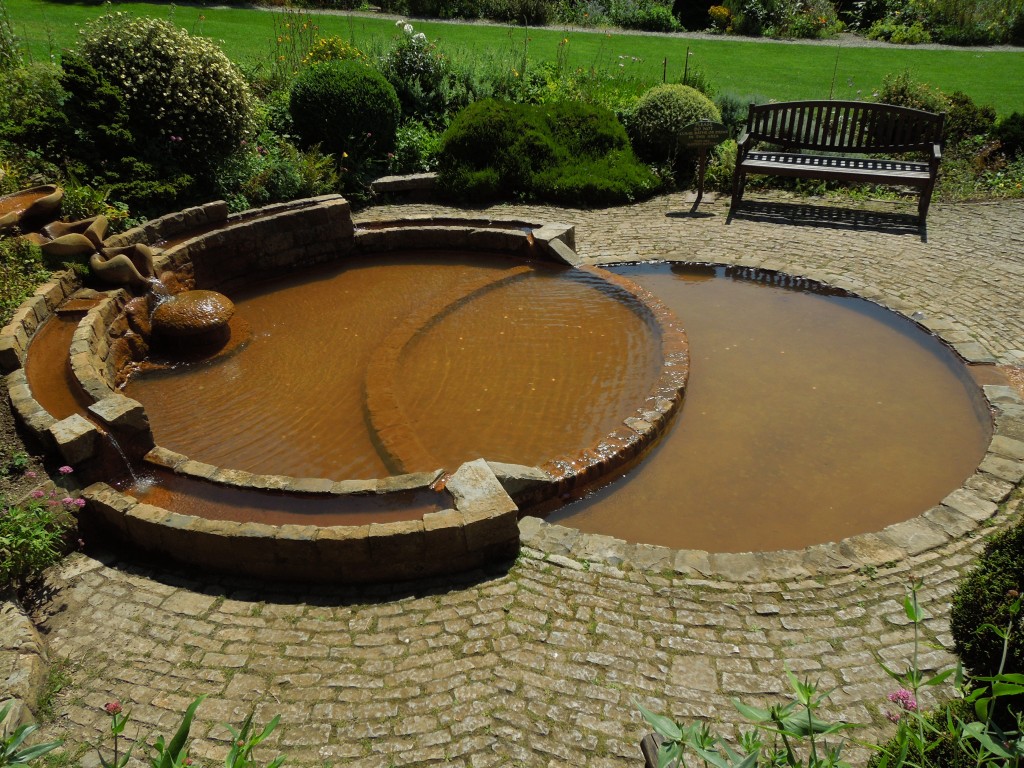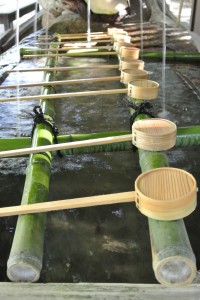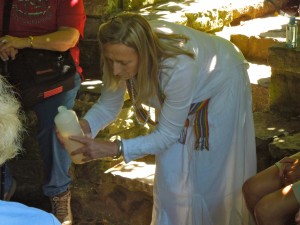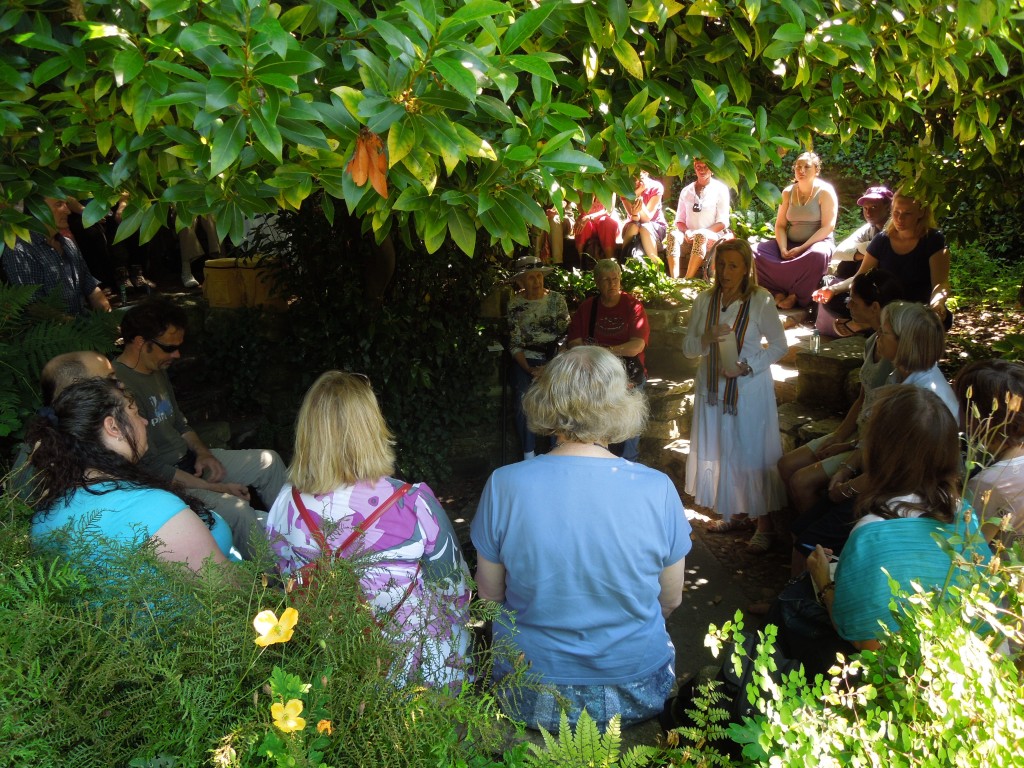Water deities
Gratitude for the blessings of water plays a big part in Shinto, and there are many shrines dedicated to water deities. Sujin is a composite deity of water, and Ryujin a water dragon particularly associated with the sea. Around Kyoto, Matsuo and Kibune Shrines are well-known for their watery connections.
Matsuo Shrine was founded by the immigrant Hata clan, who brought saké-brewing techniques from the continent: water for saké is still drawn from the magical Turtle Well. Kibune Shrine further north is located at the source of the Kibune River, identified by tradition by the mother of Emperor Jimmu who sailed up the stream in a stone boat. In the past the shrine was associated with rain rituals, and today fortune slips are floated on the water to disclose one’s fate.
It’s often said that water plays a particularly strong part in Shinto consciousness because of rice-growing and the mountainous nature of the country. Ancient communities were nestled in isolated valleys, and the surrounding hills were alive each spring with the melodious sound of water gushing out of their slopes. Not only was it vital to wet-rice cultivation, but it had a magical purifying nature. Misogi (cold water austerity) even provided a means of immersion in the spirit of nature. It was truly a gift of the gods.
Pagan springs and holy wells
In ancient Britain, as elsewhere, certain springs were treated as sacred and there is evidence of offerings having been made. The appearance of clear fresh water from deep within the earth must have seemed miraculous and providential. Springs that never failed or ran at a constant temperature would have been venerated for their special properties.
Some of the wells and springs had healing powers, because the waters were rich in iron, calcium or other minerals. Some indeed, like Mother Shipton’s Cave, were so rich in limestone that they ‘petrified’ anything suspended in the water.
It used to be thought that Christianity simply took over pagan sites by substituting stories of saints and miraculous springs. It was in the tradition of Moses who stuck a staff into the ground and water gushed out. Now however historians think that the holy wells of Christianity may have developed independently from the pagan springs of ancient times.

Water basin at Chalice Well in Glastonbury with the shape of the Vesica Piscis, to symbolise the meeting of the physical and spiritual worlds
Chalice Well ceremony
Today happened to be Water Celebration day, and I attended a ceremony at Glastonbury’s Chalice Well. It’s unusual in keeping a constant flow and temperature throughout the year. Moreover, the water has a reddish tint, which led in the past to its association with the Holy Grail. What on earth is that all about?!
According to legend, Joseph of Arimathea, the uncle of Jesus, came to Avalon (the old name for Glastonbury) after the crucifixion, bringing the Holy Grail with him. He buried the chalice near the Tor, and the blood of Christ which it contained now runs in perpetuity causing the reddish water of the spring. The well is kept now as a place of peace and contemplation.
At the ceremony, conducted by an Avalon Goddess priestess, thanks were given for the blessings of water and emphasis put on the need to protect it from pollution. Water brought from other spiritual places were added to the well, and the eighty or so people attending prayed for purity and meditated on its life-sustaining nature.
The Japan connection
The ritual all seemed much in the neo-pagan spirit of contemporary Glastonbury, but I was startled to learn it was the brainchild of Japanese researcher, Emoto Masaru, whose photographs of water molecules have achieved a worldwide fame.
In accord with his assertion that human consciousness affects the structure of water, Emoto has initiated a worldwide Love and Thanks to Water Day on July 25, during which he advocates the reciting of a simple prayer: ‘Water we love you’ (repeated three times); ‘water we thank you’ (repeated three times); ‘water we respect you’ (repeated three times).
Not only the sentiment, but the form of the prayer (3 x 3 as in the Shinto san san kudo wedding ritual) struck me as redolent of the Japanese tradition. Here in Glastonbury, on this Water Celebration day, was a most unexpected linking of neo-pagan and Shinto sensibilities. How apt then that by sheer chance the person next to me with whom I held hands in our circle of silence should have been a Japanese from Kanazawa who had just got off the bus from Bristol and wandered unknowingly up to the well.
Synchronicity in a Steiner-inspired garden!
Crystal clear…
The quest that never ends
At Chalice Well
**************************************************************
For a Youtube demonstration of Emoto’s work, see here.
For an overview of water deities in Japan, see here.




Leave a Reply